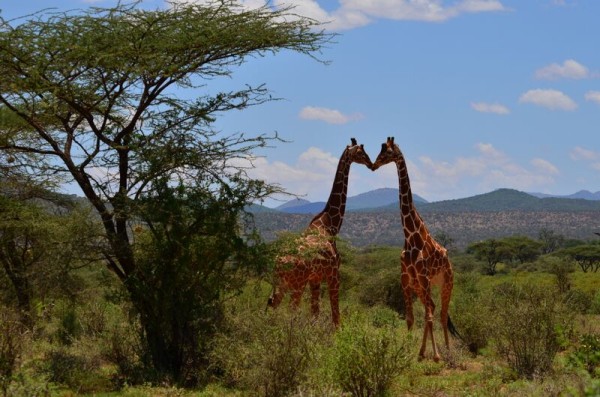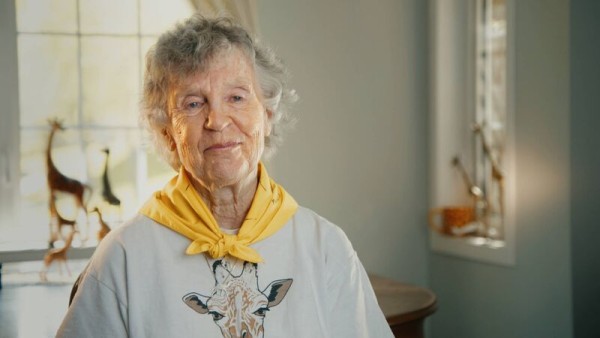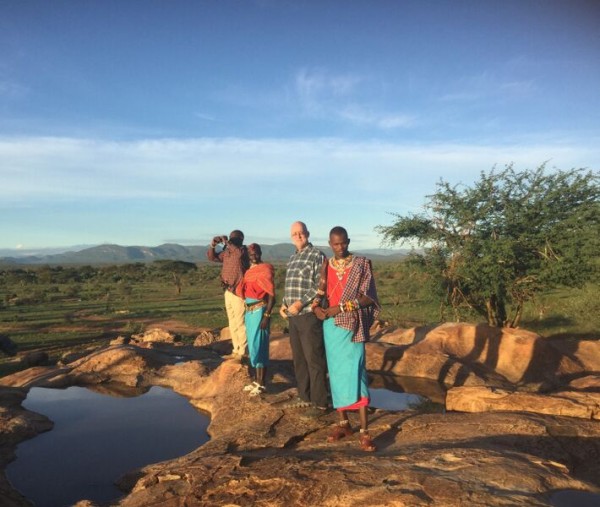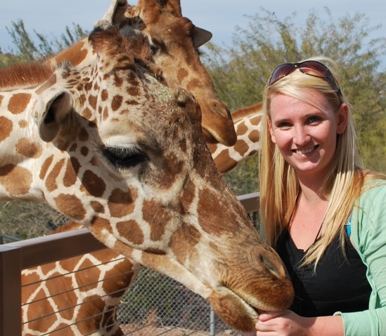
Giraffes, the beloved icons of the wild, have roamed the earth for about one million years, yet they’re now in danger of disappearing. This is the takeaway from Mark Johnston’s impassioned documentary, Giraffes — The Forgotten Giants, which will be broadcast on CBC TV’s splendid program, The Nature of Things, on Thursday, November 5 at 8 p.m.
With their stilt-like legs, long necks, cinnamon-spotted coats, flirty eyelashes and loping gait, giraffes are among the most recognizable and beloved mammals in Africa. Those who have been lucky enough to go on tanzania safaris or anything similar will have seen them in all their glory and in abundance, but now they’re vanishing at an alarming rate. The plains and forests of the African continent were home to one million giraffes 200 years ago, but since then there has been a precipitous decline in their numbers. Today, only 80,000 giraffes are left, and this should be a source of great concern to animal lovers.
Giraffes, hosted by David Suzuki, doesn’t explain this phenomenon, apart from briefly alluding to the fact that these graceful animals are hunted for meat. Instead, the film focuses on conservation efforts to ensure their survival.

Although scientists have been seriously studying giraffes since the ground-breaking research of Canadian biologist Anne Innis Dagg in the 1950s, there is still much to learn about them, says Suzuki.
Dagg, a professor at the University of Waterloo, was apparently the first person to study giraffes in their natural habitat. Her book, The Giraffe: Its Biology, Behaviours and Ecology, is still the standard work on the subject.

She inspired Irish scientist John Doherty to devote himself to the study of giraffes. He’s the coordinator of the Reticulated Giraffe Project in Samburu, a preserve in northern Kenya where he and British wildlife biologist Zoe Muller are engaged in advanced studies on giraffe behaviour.
They’re particularly interested in observing two sub-species — the Rothschild and the Reticulated giraffe, both of which are threatened by extinction.
Doherty and Muller, helped by African assistants, have made important discoveries. Doherty, of Queens University in Belfast, has learned that giraffes communicate through low-frequency sounds the human ear cannot hear. Muller has discovered the powerful maternal bond between female giraffes and their calves and the grieving behaviour that females exhibit to mourn dead calves.

In Muller’s judgment, much more research on giraffes is required in order to save them from vanishing from the planet. Johnston’s film not only makes that point abundantly clear but also instills in viewers a genuine appreciation of one of the most elegant animals on the planet.